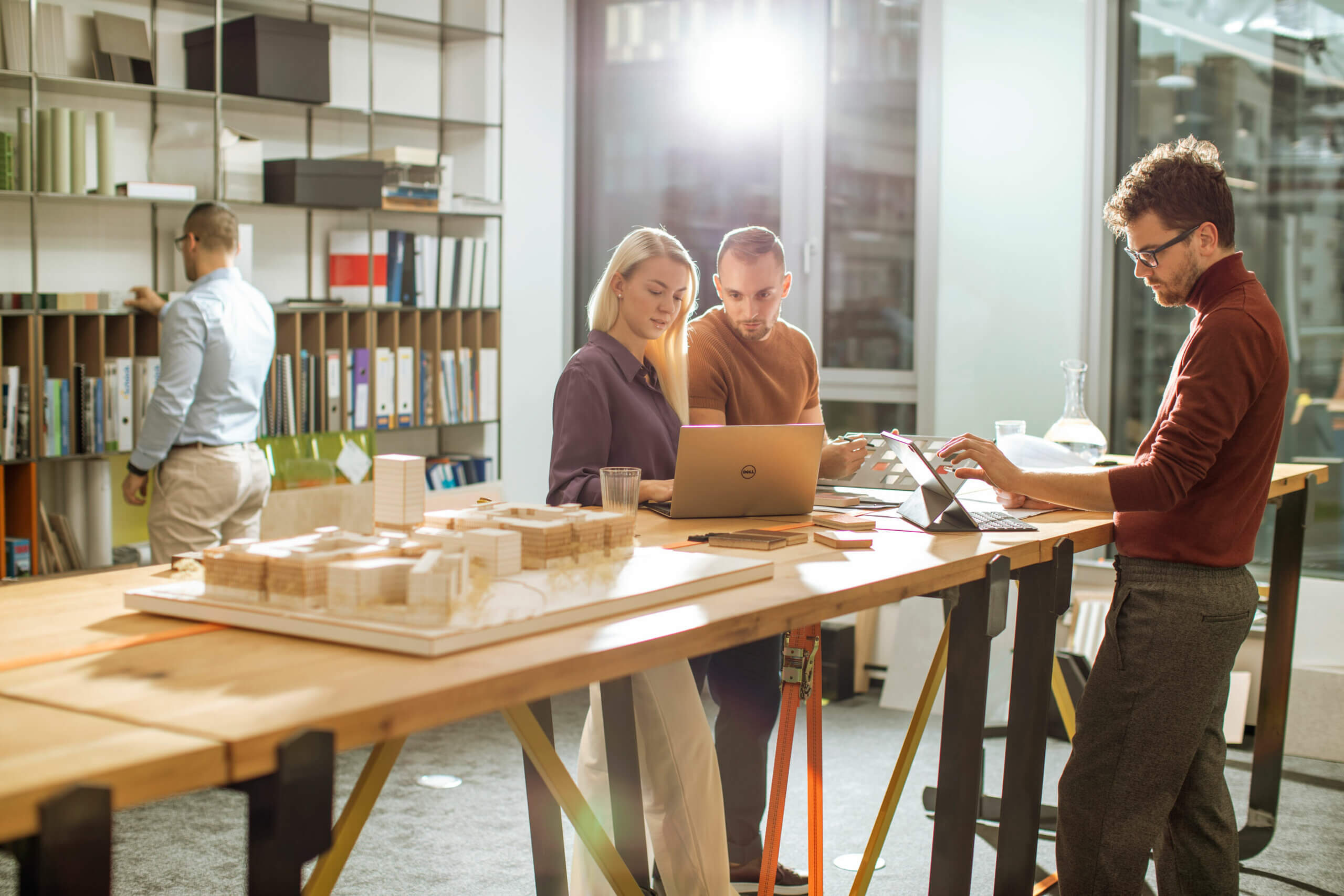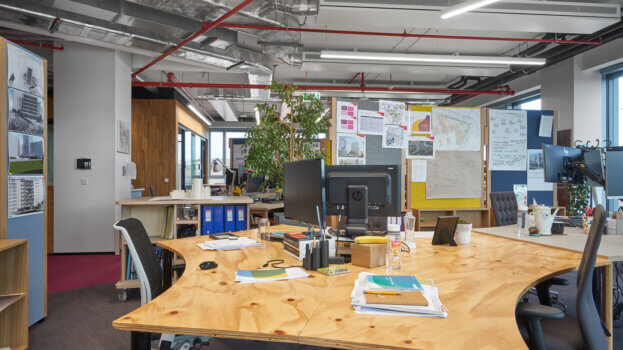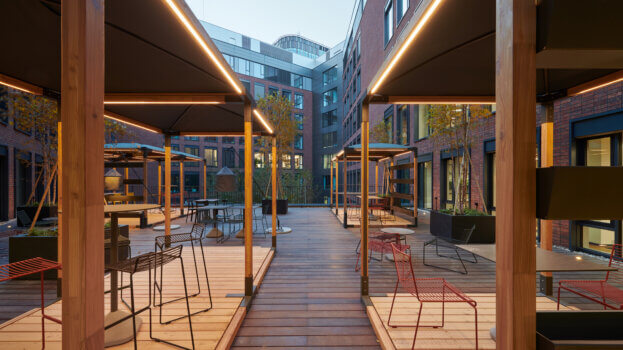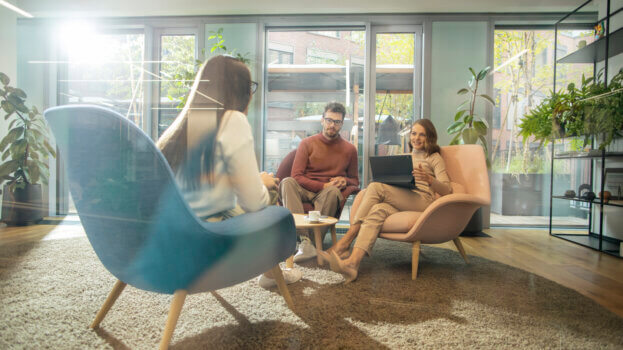Workspace consultancy is more than an office decorating or an office fit-out service. It’s an insight-driven process that ensures an office delivers optimal performance in terms of utilisation, cost and employee satisfaction. At HB Reavis, we follow a 4-step process:
- Workplace analytics & consultancy
- Space planning & concept design
- Fit-out & furniture project management
- Post relocation
How long does the consulting process take? That depends on the scope of a project, taking factors such as the size of the workspace, the number of employees and the client’s needs into consideration.
Why is workspace consulting important?
Our subconscious is often influenced by factors we don’t always immediately perceive. The same can be said of office space design because an office dramatically impacts the employee experience. It positively or negatively affects moods, wellbeing, behaviours and productivity – often without users even realising it.
This means workspace consulting (or workplace consultancy) is hugely important to employers, particularly for their management, legal team, HR and other consulting and problem-solving professionals.
It mainly works on two levels. First, there’s the physical workspace design, like colours, shapes, materials and technology. The second factor is the office floor planning and how the space is divided – how people move, which teams are adjacent to each other and how interactions flow around the office.
Who is a workspace consultant?
Workspace consultants are the people who handle the process. We ensure our clients have a single point of contact who manages everything end-to-end.
A consultant’s primary tasks are to understand what a client wants from their workspace and their long-term business strategy, collect all the necessary data, develop a workspace strategy (with architects who prepare a space plan), and deliver the final workspace.
How workspace consulting works
The earlier workspace consultants are involved in a project, the greater their impact is. What makes Origameo by HB Reavis really unique is that Origameo executes the whole package of workplace services in-house.
The team oversees everything from analysis to fit-out, and it can handle change management activities too – helping the client’s workforce understand the reasons behind the new design and making the most of the new space. They can also add value post-completion by reviewing the success of the space and adjusting it to meet new needs and evolved behaviours.
What is the process like at Origameo?
-
Workspace analytics & consultancy
Consultants collect various data about the organisation and learn where the company is headed, what the culture is, how the teams interact and what their individual working styles are. Origameo then uses these insights to develop a unique workspace strategy that matches the company’s vision.
-
Space planning & concept design
A smartly designed workspace enhances productivity and wellbeing. Workspace consultants at Origameo turn a workspace strategy and data-driven insights into a new office design that reflects the client’s needs and goals.
During the creative sessions, customers can touch and feel all the material samples and experience visual showcases of the spaces, helping them understand what’s in store and how it will help them thrive.
-
Fit-out & furniture project management
Origameo brings all the plans, layouts and interior designs to life by managing the fit-out and furnishing stage. Overseeing planning, tendering and production, all in addition to installation and delivery, they take total care of creating a new, high-quality work environment on time and on budget.
-
Post relocation
Once clients are settled into the new space, our workspace consultants will review how customers use it so the right adjustments can be made to ensure the space remains fine-tuned to the needs of the business, allowing the teams to perform at their best all day, every day.

Sources & about the authors
All the information in this article is based on 30 years’ experience in the field, and it’s summarised in our Space & Experience Toolkit. This article was written by Christopher Svitok and supervised by Barbora Karasova and Jana Strakova.






